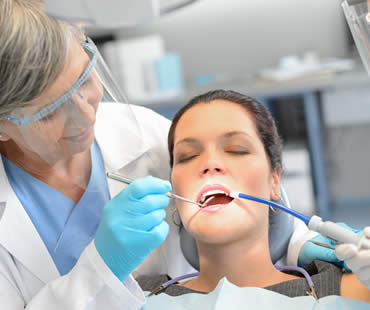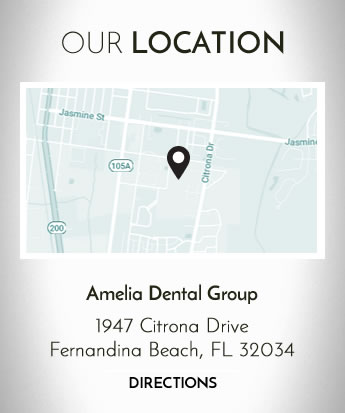
Nitrous oxide, otherwise known as laughing or happy gas, is a colorless and odorless gas that you inhale through your nose. The effects of nitrous oxide are a relaxed feeling and diminished pain, making it an ideal sedation option for many dental procedures. Advantages of sedation utilizing nitrous oxide include:
- The effects of nitrous oxide make their way to the brain in mere seconds, and the pain relieving properties develop in just minutes.
- Your sedation dentist can alter the level of sedation during treatment.
- Nitrous oxide can be administered for the exact amount of time it is needed to complete the procedure.
- Nitrous oxide has no negative after-effects because it is eliminated from the body within five minutes after the sedation is stopped.
- Your sedation dentist has complete control and is able to give incremental doses of nitrous oxide, eliminating the risk of accidentally overdosing.
- No injection is required, making nitrous oxide a very attractive option for patients with a fear of needles.
- The relaxing effects of sedation with nitrous oxide is known to eliminate or reduce gagging.
- Sedation with nitrous oxide is considered very safe and has no negative effects on other organs of the body.
There are a few potential disadvantages of sedation with nitrous oxide, including:
- Some patients may not achieve the desired level of sedation with the maximum amounts of nitrous oxide allowed.
- Patients who are mouth breathers, have claustrophobia, or have difficulty breathing through their nose may not be good candidates for nitrous oxide.
- If you are prone to nausea or a sensitive stomach, nitrous oxide may not be a good option.
If you need a dentist in Fernandina Beach contact us today

Any type of phobia can be a difficult and often frightening condition, but fear of the dentist can be one of the worst because it can ultimately even be deadly. Proper dental care is vital to a healthy mouth and body. People who neglect going to the dentist for treatment are putting their health at risk, but sedation dentistry offers them a way to get the care they need to maintain better health.
Dental sedation involves administering certain types of drugs, from mild to stronger medications, to help a patient relax. The effects of the drugs decrease anxiety and awareness of the specifics related to treatment, so that procedures can be performed without upsetting the patient. Pain is also diminished so that the patient is comfortable during the dental visit.
Sedation methods vary according to the patient and the treatment. The medication may be given as pills that are swallowed orally, nitrous oxide gas that is inhaled through a mask, or medication given intravenously directly into the vein. Often, local anesthetics might still be required but the patient is already under the effects of sedation and does not feel the injection.
There are a number of benefits provided be sedation dentistry. Patients who otherwise might avoid checkups are able to get preventative care and procedures done without anxiety. They usually don’t remember what happened during treatment, so they come away without negative memories. Patients are also able to sit still during treatment, and for longer periods of time so that multiple procedures may be performed if needed. Lengthy or complex procedures are made possible by using sedation that allows patients to cooperate and not realize how long they are in the dental chair.
Sedation dentistry is a way for patients to obtain necessary dental care without the anxiety or fear that sometimes accompanies it. This can make all the difference in improving some people’s oral and general health.
We treat patients from Fernandina Beach and the surrounding area

Intravenous, or IV, dental sedation offers patients a way to remain completely relaxed while undergoing dental procedures. Those with dental phobias, severe anxiety, special needs, or other issues are able to obtain necessary treatment instead of avoiding trips to the dentist. IV sedation is an effective and safe process that makes you very relaxed and unaware of the dental work being done. You won’t even remember anything about treatment, allowing you to come away with a positive experience.
Becoming a candidate:
IV medications are delivered directly into your vein through a needle in your arm. You’ll need to schedule an appointment to discuss sedation with your dentist, and disclose any medical conditions and medications (both prescription and over-the-counter) you are taking. A thorough examination will be conducted, X-rays or other tests may be performed, and a discussion of all aspects of IV sedation is necessary to determine if this treatment is right for you.
Going to your appointment:
Arrange for a friend to drive you to and from your appointment, because you may feel drowsy at first. It is advised not to drive, return to work or school, or make important decisions for a day following sedation so that the medication has time to completely wear off. In some cases, your dentist may give instructions for fasting prior to your procedure.
During your procedure:
Qualified, well-trained professionals will be doing your anesthesia and procedure. You will be monitored the entire time to ensure your safety and comfort. The IV will be placed in your arm, and some patients request an additional method of mild sedation be used if needles are upsetting. When the dental work is complete, the sedation will be reversed and you will become more alert to go home.
Recovering from your appointment:
Follow all of the instructions from your dentist about after-care, which will vary depending upon your procedure. Any grogginess you might feel from the sedation usually wears off after a few hours, so plan on resting before returning to your normal routine.
We treat patients from Fernandina Beach and the surrounding area

Giving some form of a sedative medication to patients during dental treatment is what sedation dentistry is all about. It causes relaxation and decreases anxiety so that the patient is comfortable and the dentist can work safely and efficiently. Sedation dentistry is most popular for those who experience mild to moderate dental anxiety, patients who have dental phobias, and children who are frightened by dental visits.
There are a number of advantages that sedation dentistry offers to both patients and dentists. Here are some reasons that it is popular with patients:
- Pain is diminished so that the patient hardly feels the instruments, needles, or anything else as part of the treatment.
- Awareness is reduced so that that patient doesn’t realize exactly what is happening and doesn’t keep track of the time spent in the dental chair.
- Anxiety is lessened so the patient feels calm and carefree while undergoing treatment that normally might cause upset.
- Side effects are minimal and rare, making sedation dentistry both safe and effective.
- The gag reflex is reduced so patients who might normally have problems gagging during treatment are able to undergo procedures without issues.
- Time is saved for the patient because often all treatments can be performed in one office visit, instead of having to make several trips and miss more time from work or other activities.
Dentists enjoy benefits of sedation dentistry as well:
- Patients are more cooperative and able to sit still during treatment, allowing dentists to get the job done with less trouble.
- Multiple procedures can be done in a single office visit, so the dentist can accomplish more in a single time slot.
- Reflexes of the patient are more controlled so that movement is less haphazard and the dentist can work more efficiently.
If you need a dentist in Fernandina Beach contact us today

Fear can stop come people from doing certain activities, and sometimes it may impact a person’s health and overall wellbeing. One example is visiting the dentist. You might be surprised at the number of people who completely avoid dental care because they are afraid. As a result, sedation dentistry has become a popular way to allow nervous patients to get the necessary treatment without all of the negative vibes.
Sedation dentistry involves administering drugs to help patients relax. There are various levels of sedation available, depending on the patient’s needs, procedures, age, and medical history. Your dentist can help decide which sedation amount and method is most appropriate for you. It ranges from light sedation to simply take the edge off, moderate sedation that renders you unaware but still awake, or deep sedation that practically puts you to sleep throughout treatment.
There are also a variety of methods for sedation dentistry. Oral medications are swallowed, nitrous oxide gas is administered through a mask over your nose, or medications can be given through an intravenous needle directly into your veins. The method is recommended based on each patient’s needs and situation.
Dental sedation manages pain so that you won’t feel anything during treatment. Most patients do not remember much about what occurred while under sedation. That is especially beneficial for patients with dental fears, because they are more willing to return for future appointments since they don’t have any bad memories from the last one.
Sedation is safe and effective when performed by a trained dentist. Make sure that any dentist who administers your dental sedation is qualified and experienced with the techniques. There is no reason to avoid dental checkups and treatment due to fear or anxiety. It is much better to get care to correct problems before they worsen, or head them off before they start. Sedation dentistry enables patients to comfortably and safely obtain treatment and eliminate dental fears.
We treat patients from Fernandina Beach and the surrounding area

If you are about to undergo a dental therapy that necessitates the use of sedation dentistry, especially IV sedation, there are definitely some important questions you should ask your dentist prior to the procedure. Remembering to ask these questions can be difficult, especially if you are feeling anxious or ill at ease with regard to the treatment.
Use this guide to give you some of the most important questions you might not have thought of or remembered to ask:
- What type of sedation will I be receiving?
- What risk factors – even rare ones – are associated with this type of sedation?
- How long will the treatment take, and during how much of that time will I be sedated?
- How will the sedation be administered?
- Who will give me the sedation and monitor it during my treatment?
- What safety measures do you have in place in case of any medical emergency?
- What would happen in the case of a cardiac emergency or a seizure?
- Who is trained in CPR and other life-saving skills?
- What kind of preparations do I need to make prior to my treatment?
- Should someone accompany me to be present during the treatment?
- How soon following treatment will I feel awake and alert?
- May I drive myself home afterward?
- What kind of pain can I expect after my treatment?
- How will I manage my discomfort?
- What kind of aftercare does my particular treatment require?
- What signs should I look for that would lead me to contact you for a follow-up?
Talk to Fernandina Beach sedation dentist Dr. Kitson, Dr. Bietenholz, Dr. Garrett, and Dr. Mokris to get the answers to questions like these and any others you may have prior to receiving sedation dentistry.







